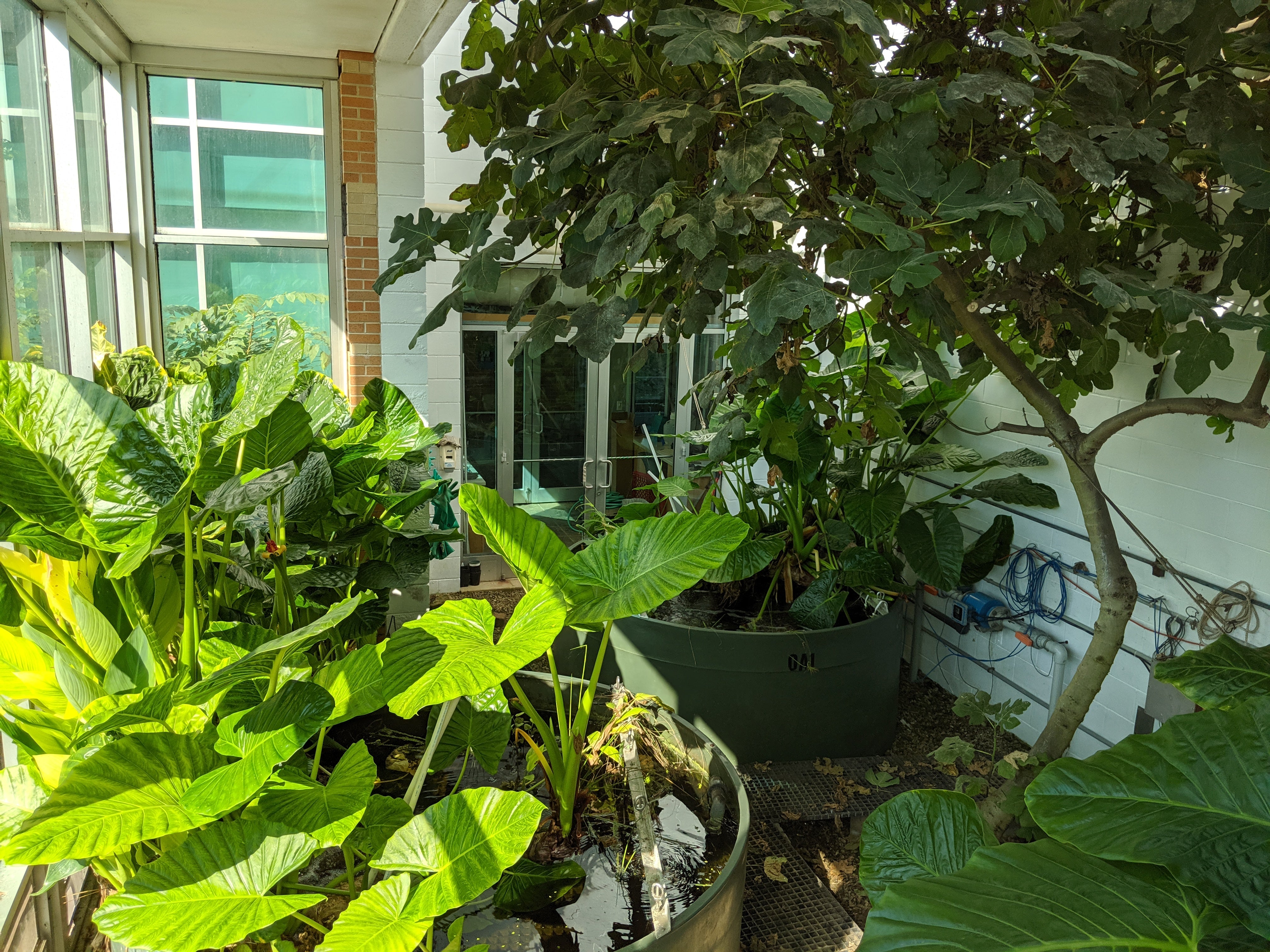Evolving Design

A central philosophical and methodological underpinning of ecological design is the notion that natural ecological systems should serve as a template for human designs … the Center was explicitly conceived as an integrated building-landscape system that would continue to change and to improve in performance over time.
- Prof. John Petersen
Nearly two decades after the Center opened, the fruit orchard has matured to the point that yield is maximized and some diseased trees have been replaced.
The organic garden tended to by students bears a large annual harvest of peppers, squash, kale, apples, pears, berries, and more.
The wetland proved too small for both ecological and aesthetic function. It was redeveloped by students to include multiple seating areas and is enjoyed (in warm weather) by students and faculty alike.
The Living Machine rapidly achieved ecological maturity requires regular pruning to prevent plants from overflowing the tanks. A fig tree in the center has grown to a height of 15 feet and dominates the facility.
In 2006 a second, larger solar array was installed over the parking lot. The additional 100 MWh’s generated enabled the Center to achieve its design goal of being a net exporter of electricity on an annual basis.
Research on the short- and long-term evolution of the system continues today. These efforts provide ongoing opportunities to educate a variety of audiences, including Oberlin College students, regional kindergarten through high school students, other university students, faculty, architecture and design professionals, and lay audiences.